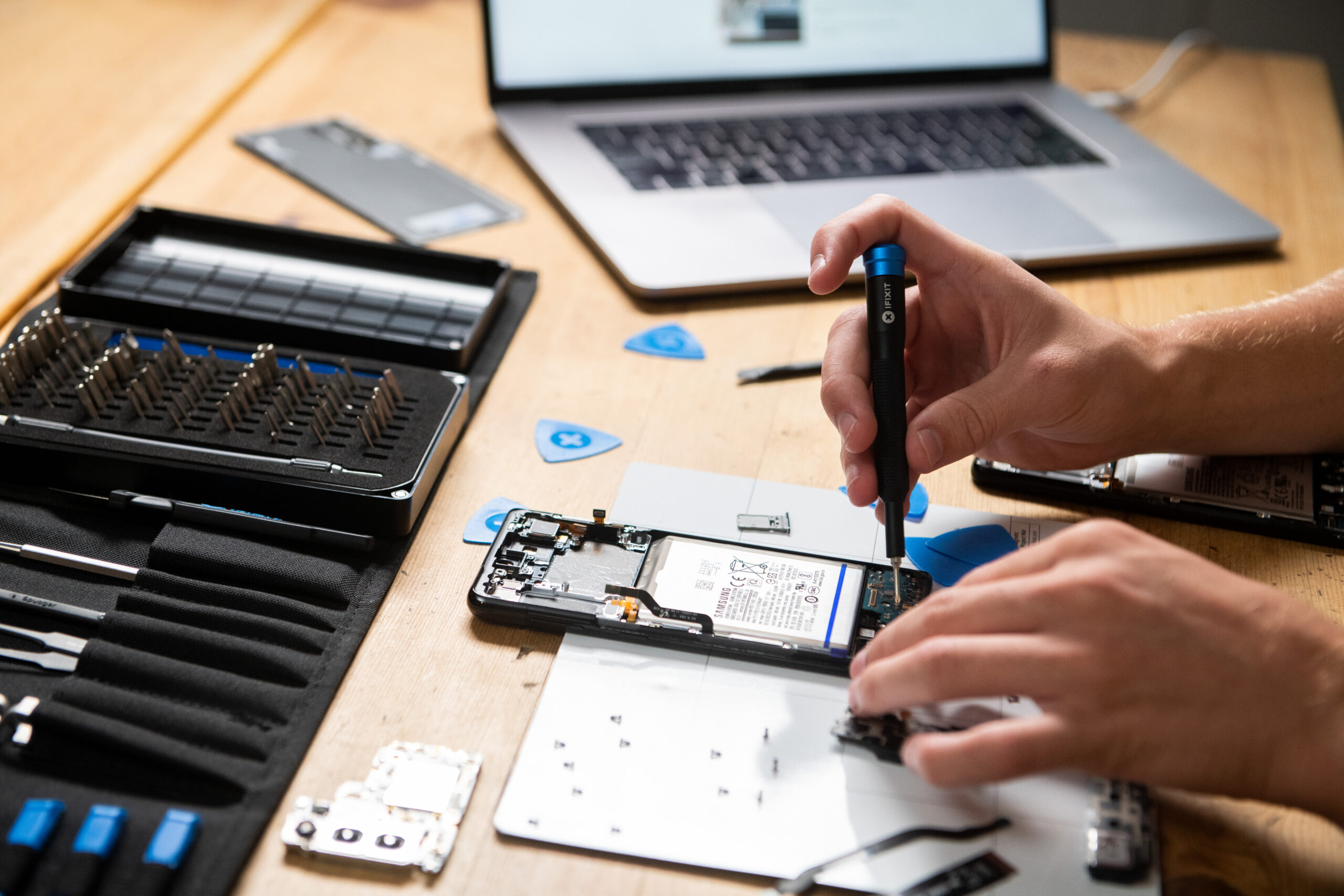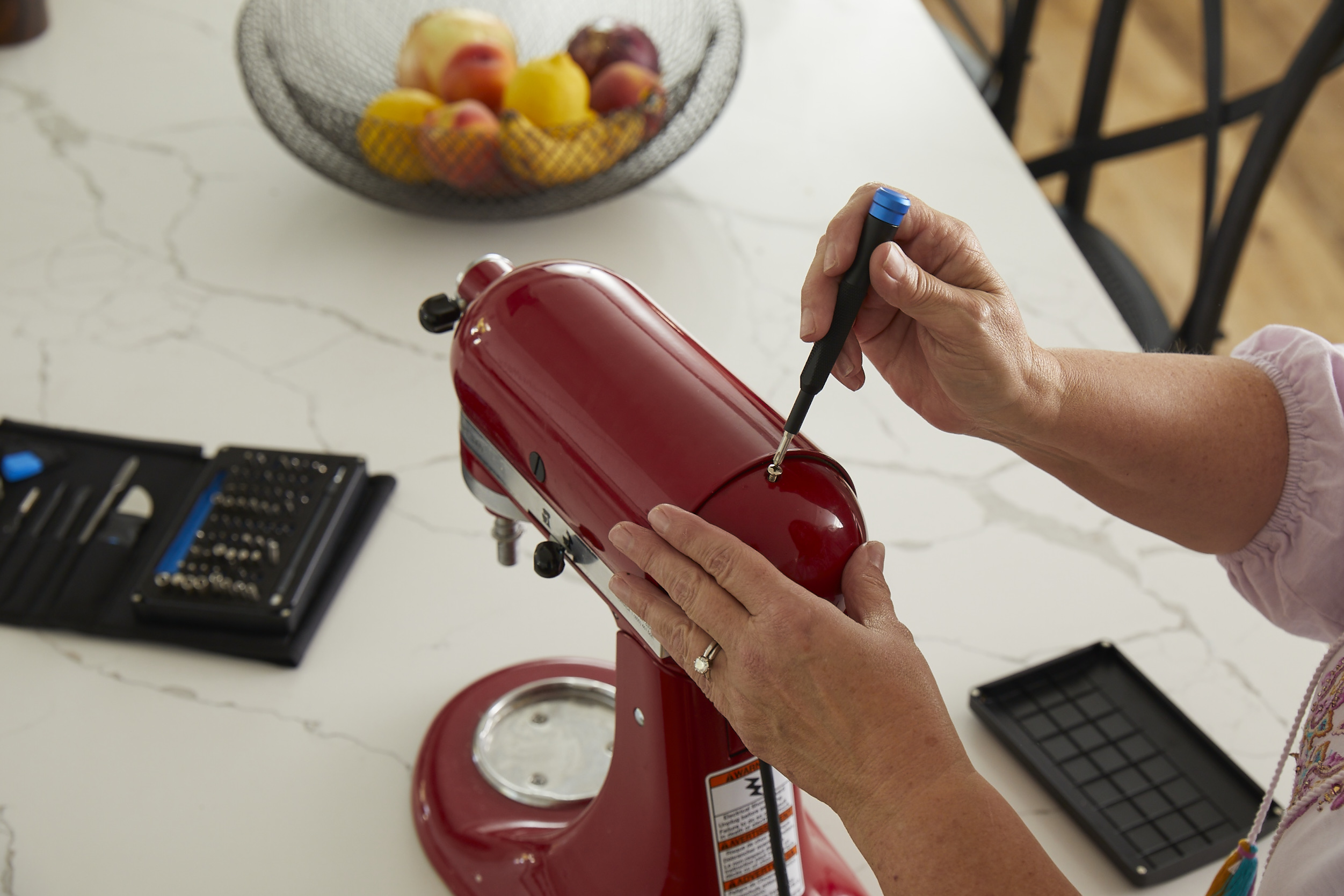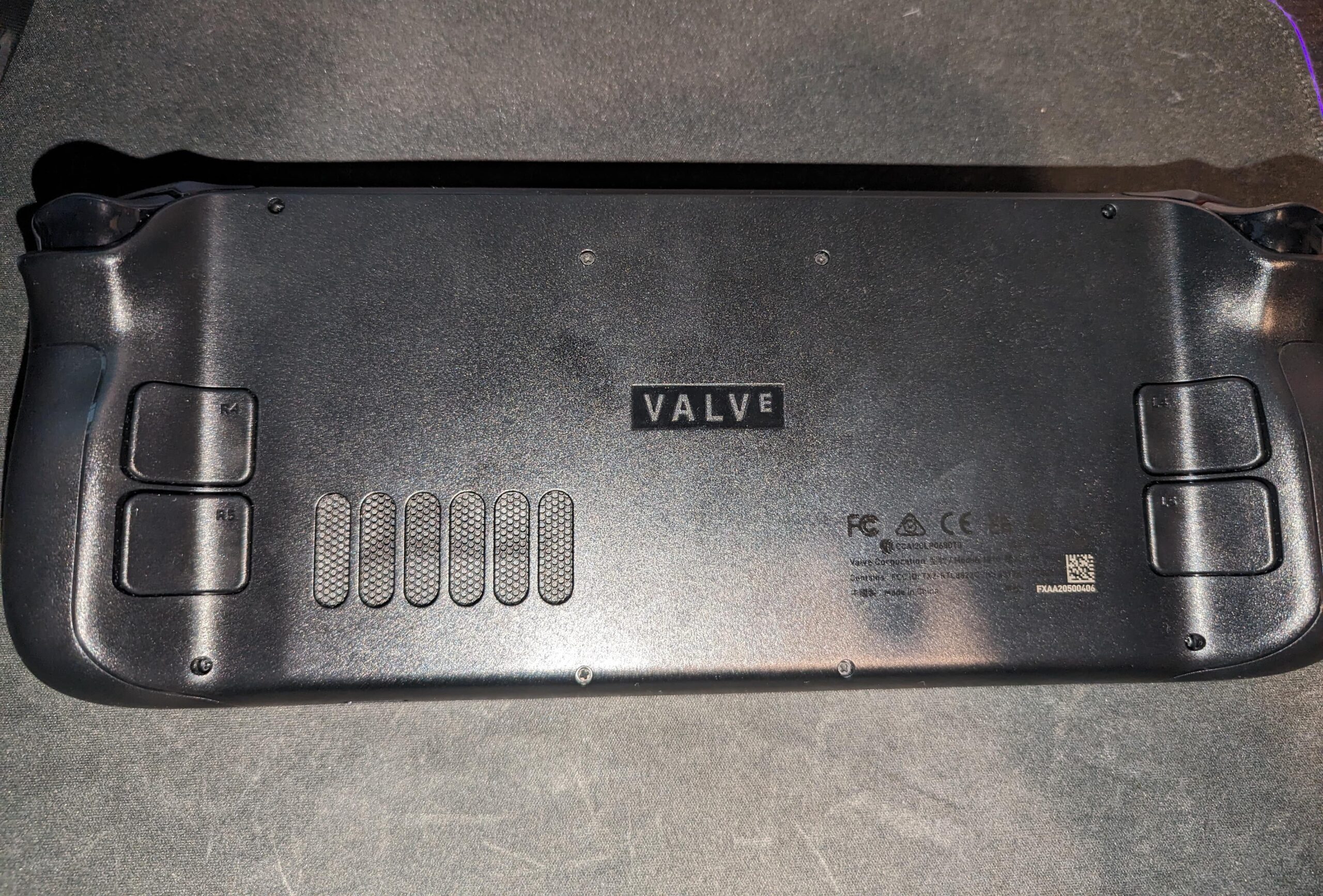Cover image credit: iFixit
Smartphones, computers, and a range of devices now dictate how many people live their lives. They are tools that allow us to keep connected and get work done. But if something were to break in these expensive gadgets, would you be prepared to fix it yourself to keep costs down? Mark Turner takes a closer look at how the ability to easily repair your computers and appliances could benefit everyone.
With companies such as Google offering up to seven years of updates for their phones, with other smartphone manufacturers like Apple offering five, the question of will these phones last that long remains. This is where the right-to-repair movement comes in.
The right to repair allows you to freely repair any of your technical or electronic products in a way that there are few obstacles to inhibit you from doing so. This can include access to spare parts and tools, product design allowing for easy repairability, and clear communication from the manufacturer.
Companies that advocate for the right to repair include iFixit as well as The Restart Project and Right to Repair EU. They all believe that we should have the ability to freely repair our electronics without any complicated hurdles and keep electronics out of a landfill.
In 2021, a YouGov poll showed that 81% of people (from a sample of over 1,700 people) supported the government expanding the right to repair legislation to smartphones, tablets, and laptops.
Although smartphones are typically the culprits when it comes to needing repairs, the right-to-repair movement can involve any type of appliance you have in your business or home, from laptops to washing machines if it develops a fault.
Warranties are also crucial to the longevity of a device because it ensures proper repair of any appliance if a fault occurs within a specific time period. Some companies offer extended warranties at additional cost, but these usually only cover defects that develop themselves.
Accidental damage is equally as important, but it comes at a cost to the customer, and sometimes manufacturers charge high fees for mending a device - or may not do it at all. This is why third parties, such as repair guides and shops are a necessity.
iFixit is a key player in this movement as a publisher of free online repair guides. They also sell parts and tools for a range of devices in many different countries making repairs easier and more accessible.
Elizabeth Chamberlain, Director of Sustainability at iFixit, explained why the right to repair is important, and how it has advanced over the years.
“With every new model, there are fewer big technological improvements from model to model and I think we've seen a change in people's behaviour. People are keeping their phones for longer than they were a few years ago.
“The real reason why people wouldn't want to keep things for seven years or longer, than certainly people who already do, if there were a commitment from cell phone manufacturers to not only keep the hardware supported but also keep the software supported.”
This is why the right to repair goes just beyond the hardware implications, but also the software limitations. A perfectly good phone or laptop could have run its course from a software point of view with no defects from its hardware.
Google’s recently announced commitment to seven years of software support on their latest Pixel smartphones are also extremely important to the longevity of a device, but they must also support the repair of a device so that people can continue to use it for this long, and the battery is one of the components that can degrade the quickest.
“15 years ago, every cell phone had a user-replaceable battery you could pop open the back with your thumbnail,” Elizabeth said. “A lot of people used to carry around extra batteries with them; the idea of doing a quick iPhone battery replacement in the middle of your day is insane, nobody would do that.
“There are some positive gains in the battery replaceability department. Apple has prioritised battery replacement compared to six to seven years ago. By four years people are seeing significant battery degradation, and those people would want to replace the battery by that point.”
Elizabeth expressed how phone part replacements are daunting to people, but she doesn’t feel organisations are actively trying to make their devices difficult to repair.
“We definitely see a lot of genuine enthusiasm from engineers within big organizations; I think engineers are problem-solving kinds of people. I think most people are frustrated with the take-use-dispose society. You know, already to see things last thing longer and I think that's especially true for engineers.
“Frankly repair service is pretty good business for a lot of companies, they're able to actually charge for service and charge for warranty and extend warranties.”
Although not everyone would still want to tackle the daunting task of repairing their own devices, it would make it easier and quicker for any local repair shops to fix them, which could even lead to cheaper repairs.
It's really easy to fall into the trap when something breaks that your first though is 'well I've got to get a new one'.
Warranties are also crucial to the longevity of a device because it ensures proper repair of any appliance if a fault occurs within a specific time period. Some companies offer extended warranties at additional cost, but these usually only cover defects that develop themselves.
Accidental damage is equally as important, but it comes at a cost to the customer, and sometimes manufacturers charge high fees for mending a device - or may not do it at all. This is why third parties, such as repair guides and shops are a necessity.
iFixit is a key player in this movement as a publisher of free online repair guides. They also sell parts and tools for a range of devices in many different countries making repairs easier and more accessible.
Elizabeth Chamberlain, Director of Sustainability at iFixit, explained why the right to repair is important, and how it has advanced over the years.
“With every new model, there are fewer big technological improvements from model to model and I think we've seen a change in people's behaviour. People are keeping their phones for longer than they were a few years ago.
“The real reason why people wouldn't want to keep things for seven years or longer, than certainly people who already do, if there were a commitment from cell phone manufacturers to not only keep the hardware supported but also keep the software supported.”
This is why the right to repair goes just beyond the hardware implications, but also the software limitations. A perfectly good phone or laptop could have run its course from a software point of view with no defects from its hardware.
Google’s recently announced commitment to seven years of software support on their latest Pixel smartphones are also extremely important to the longevity of a device, but they must also support the repair of a device so that people can continue to use it for this long, and the battery is one of the components that can degrade the quickest.
“15 years ago, every cell phone had a user-replaceable battery you could pop open the back with your thumbnail,” Elizabeth said. “A lot of people used to carry around extra batteries with them; the idea of doing a quick iPhone battery replacement in the middle of your day is insane, nobody would do that.
“There are some positive gains in the battery replaceability department. Apple has prioritised battery replacement compared to six to seven years ago. By four years people are seeing significant battery degradation, and those people would want to replace the battery by that point.”
Elizabeth expressed how phone part replacements are daunting to people, but she doesn’t feel organisations are actively trying to make their devices difficult to repair.
“We definitely see a lot of genuine enthusiasm from engineers within big organizations; I think engineers are problem-solving kinds of people. I think most people are frustrated with the take-use-dispose society. You know, already to see things last thing longer and I think that's especially true for engineers.
“Frankly repair service is pretty good business for a lot of companies, they're able to actually charge for service and charge for warranty and extend warranties.”
Although not everyone would still want to tackle the daunting task of repairing their own devices, it would make it easier and quicker for any local repair shops to fix them, which could even lead to cheaper repairs.
Without legislation to force big tech brands from offering repair solutions to your devices, they may not be willing to do it from a corporate standpoint as they can generate more money by selling insurance or extended warranties.
Standard desktop computers are already fairly easy to repair as they are big and modular, but smaller, more compact devices such as laptops and smartphones, which require a delicate disassembly in order to safely pose the most issues.
iPhones are the most popular smartphones in the Western world, so having a company like Apple be on board with making their phones and laptops repairable is vital.
Apple has some methods of repairing their phones, such as a warranty, but you also have the option to visit their stores and have it repaired there. You even have the option to use Apple’s insurance cover called AppleCare.
Compared to the past, Apple will now send out their repair kits for a rental fee, but in an ideal world the equipment wouldn’t be needed if they just used standard screws. However, the effort is still a valiant one and shows that the company is interested in making it more accessible.
Their self-repair service is not yet available in every country, but once it expands it will become a massive feat for the company. It is important that conglomerates like Apple push this kind of behaviour as it will influence other companies, both big and small, to make the same move.
There have been reports where Apple have refused to fix certain products, even under warranty, so the only option would be to outsource the repair work to an independent repair company.
This is a stark contrast compared to the large desktop computers that are easy to open, however, the same cannot be said about laptops. They need to be designed in such a way that it can be as compact as possible, which can make them harder to repair.
As an example, if the memory fails on a desktop computer, it can be opened and reinserted fairly easily – sometimes even without a screwdriver - whereas a phone's internet memory is soldered to its main board meaning it is impractical to replace.
Steve Bennet, Head of IT and Security at MTS Cleansing Services, says that having a right to repair legislation would make his day-to-day life easier.
“Individual manufacturers vary in how easy they make it to repair,” he said. “I mainly work with computers, because of the pain that replacing phones, tablets and such like is. In our workforce, we've got about 500 mobile devices, and the nature of the work that our staff do, they get broken.
“From a commercial standpoint, sometimes it's easier to just pass it on to someone else and pay the smaller repair cost that way, rather than employing someone to do it on an annual basis.
“The only reason we tend to get rid of desktop computers is that eventually get to the point where the hardware itself is just not up to standard anymore. You know the process is just not good enough or the maximum RAM (memory) capacity is just not there, or even the change from spinning hard drives to solid-state storage made massive improvements.
“If one part fails in another machine that's irreparable, we'll harvest the good parts from that machine, and then if one of those fails in another machine you've got donor parts laying around from a machine that.
“You repair it as long as you can, but eventually it's got to get to the point where the hardware is just a bit too long in the tooth.
This shows that having accessible repair to one component of a computer could allow it to become faster without replacing the whole machine, which raises another concern when it comes to disposing of old technology – e-waste.”
Of course, the technology will eventually reach a point where it becomes irreparable, but the ability to either replace or salvage parts to keep the computer going for longer is an excellent cost-saving measure, which would save a company time and money as opposed to buying and setting up a new machine.
“Once you’re in [the case], changing over the hardware is not always that difficult but the amount of damage that you risk to the actual hardware is stupid nowadays.”
Sustainability is an aspect that needs to be further improved upon since the effects of electronic waste can be extremely harmful to the environment due to the toxic materials embedded in these components.
Studies have shown that up to 70% of toxic materials found in landfills are made up of e-waste containing harmful chemicals such as lead and mercury which can be absorbed by the soil and water around it polluting the nearby area.
Making products more repairable allows us to dramatically reduce the amount of waste produced by having our gadgets for longer, but this only will slow down the issue. Recycling is the next step to reducing waste by ensuring that it is used for more purposeful expenditures than a landfill.
That isn’t to say the threat of pollution from e-waste can be completely eradicated as technology is always advancing, but each material that is used can be donated to something else, such as lead being used in batteries. Unfortunately, the environmental concerns do not end there.
Whilst recycling is overall better for the environment compared to a landfill, it still causes air pollution as the materials need to be reshaped for their new purposes. That is why it is vital that we use every appliance for as long as we can by replacing defective parts before it is replaced entirely.
Product design is also an important aspect of everything we use, and with laptops and smartphones getting increasingly thinner, the way these devices are designed could make a huge difference in terms of ability to mend them.
Stuart Lambert, senior lecturer in product design at Canterbury Christ Church University, said how he considers the repairability of products when designing them. He said: “In consumer products, I think it is a very, very big problem.
“You can design them to be more repairable. You could even for example have a computer that you replace the internal components throughout the life of the computer. There are things that can happen that can make this much better, it’s just that there’s not been the incentive.
“Through people, we can apply pressure. The governments won’t do it alone. I suspect it has to be a campaign to make products last longer and reduce the amount of waste. The worst effect of waste is probably plastic that ends up in the sea.”
Stuart went on to say he believes that sacrifices do not need to be made in order to keep the compactness of a device such as a phone.
“It’s a common problem that you can’t necessarily get a product open without breaking it somehow, so you have to design the casing to reopen. If it breaks, then they know well that persons got to go out and buy a new one.”
Stuart explained how his recent encounter with Apple’s repair process did not go well, essentially making his short-lived Mac computer an expensive paperweight.
“My Apple computer broke after about three years. Apple says it was out of warranty and refused to repair it. So I was very angry about that because it’s a £2000 product.”
Under corporate responsibility, manufacturers are supposed to take far more care in how they design their products, and if you can make them last longer and repairable, then less of them end up in a landfill.
Some solutions companies could employ to make their products more sustainable is by designing them in such a way that the cables inside have some more slack, and are less likely to break when they are opened.
Another common obstacle is the heavy amount of glue used to keep the battery in place, which can make replacements a very tricky process, especially when you consider that the lithium-ion batteries used in phones can ignite when they are pierced.
Whilst these solutions would help the ease of repairing, of course, there is a limit to how much that can be repaired. If a fault occurs with the processing unit of the device, it is likely that it is unrepairable from a third-party repairman – or maybe even the manufacturer themselves without a new unit.
This all boils down to the availability of certain parts and components. Some manufacturers have created their own replacement parts to fit different smartphones, TVs, and more, but these parts are likely of lesser quality than the original genuine parts.
That is why genuine parts from manufacturers are an important requirement in becoming right-to-repair friendly. A further point of improvement could be to outsource the creation of parts to approved businesses that can make and sell parts to the original’s quality, much like iFixit does.
Independent repair shops are also a vital part of the right-to-repair equation as it is likely to affect them the most, increasing their speed and reliability in repairing customers’ tech products.
This aspect also helps local businesses thrive, as more people would be willing to get their devices repaired if parts were more accessible to repair shops, thus making the parts cheaper to obtain, and helping to reduce e-waste.
A good example of right-to-repair in action is gaming giant Valve with their handheld gaming computer called the Steam Deck. This device uses standard tools to make accessing the inside easy and swap out the internals.
On top of that, Valve has made instructional videos on how to replace different parts of their gaming system and sell each of the genuine replacement parts via iFixit, whom they partnered with.
Unlike some systems, Valve has not even included a warranty void sticker, meaning they are not interested in whether you opened up your Steam Deck or not. This is the kind of cooperation that right-to-repair advocates have been asking to get for years.
However, there are many manufacturers of smartphones, laptops, and so on, but does this large range of differently designed products affect these shops' ability to fix devices?
Lee Williams, a technician at Medway Computers , which is a smartphone, PC, and Mac repair shop, shared his thoughts on how manufacturers deal with the repairability of devices:
“It's not that it's that the manufacturers make them easier to work on. That's the thing. Everything's designed nowadays just to be thrown away. That's the problem with it. So they don't want you to take it apart, so they make it as difficult as they can.
“People would still want a professional to do it. It’s so fiddly inside, that’s the trouble. You take off the back of something and people are like ‘woah’, and it only takes one slip and then obviously you’ve ruined a connector, and then you’ve written off a motherboard or something.
Since different manufacturers assemble phones differently, some have more obstacles than others. Lee explained the differences of the disassembly processes between different brands:
“They’re all as bad as each other, to be honest. Probably the worst ones are the Samsung’s because the way that they come apart usually shatters the screens. They’re normally the hardest ones out of all of them.
“It’d be nice if you could just actually get into them to change the battery easily and stuff like that.”
The availability of parts to be used for repairs depends on what requires replacing. Common items that are repaired include batteries and screens, but some of the more specialised components can be harder to come by, such as the motherboard, which holds the most important pieces of a device.
“If you get a motherboard fail on a laptop, they’re not normally available and other bits are, but it’s the actual motherboard, once that fails on a laptop, if you can find one, they are normally expensive.”
Warranties can also affect whether a repair shop would be able to repair your device, as currently if anyone opens their device, their warranty can become void. This can be a problem for local repair shops like Medway Computers.
“If it's under warranty, as soon as we take it apart, and if we can't get the parts to repair it, the manufacturer then won't look at it because it's already been apart. That's the trouble.”
If a right-to-repair legislation is put in place, it could potentially allow people to get their parts replaced by a company other than the manufacturer, and still be covered by warranty if a fault develops itself outside of accidental damage.
As for now, people must continue to put pressure on governments so that they can introduce legislation which gives people the right to repair the products they own. The benefits vastly outweigh the negatives, with the power to fix up and ultimately keep your devices longer, saving you money, and keeping your e-waste footprint down.
Whilst companies such as Apple, Google, and Valve among others are making strides to improve their outlook on repairability, governments must step in and regulate it. With advancements being made by the European Union, the rest of the world will likely follow suit.
The EU is already talking about right-to-repair legislation, and it seems very likely that it will come soon. They have already influenced Apple’s newest iPhone, moving away from their lightning connector that they have used for years, to the much more conventional USB-C, making charging more universal across devices.
Once smartphones and laptops are easy and accessible to repair, the right to repair will hopefully expand to every electronic appliance in your home so that we stop generating electronic waste and get the most out of the devices you paid for.




